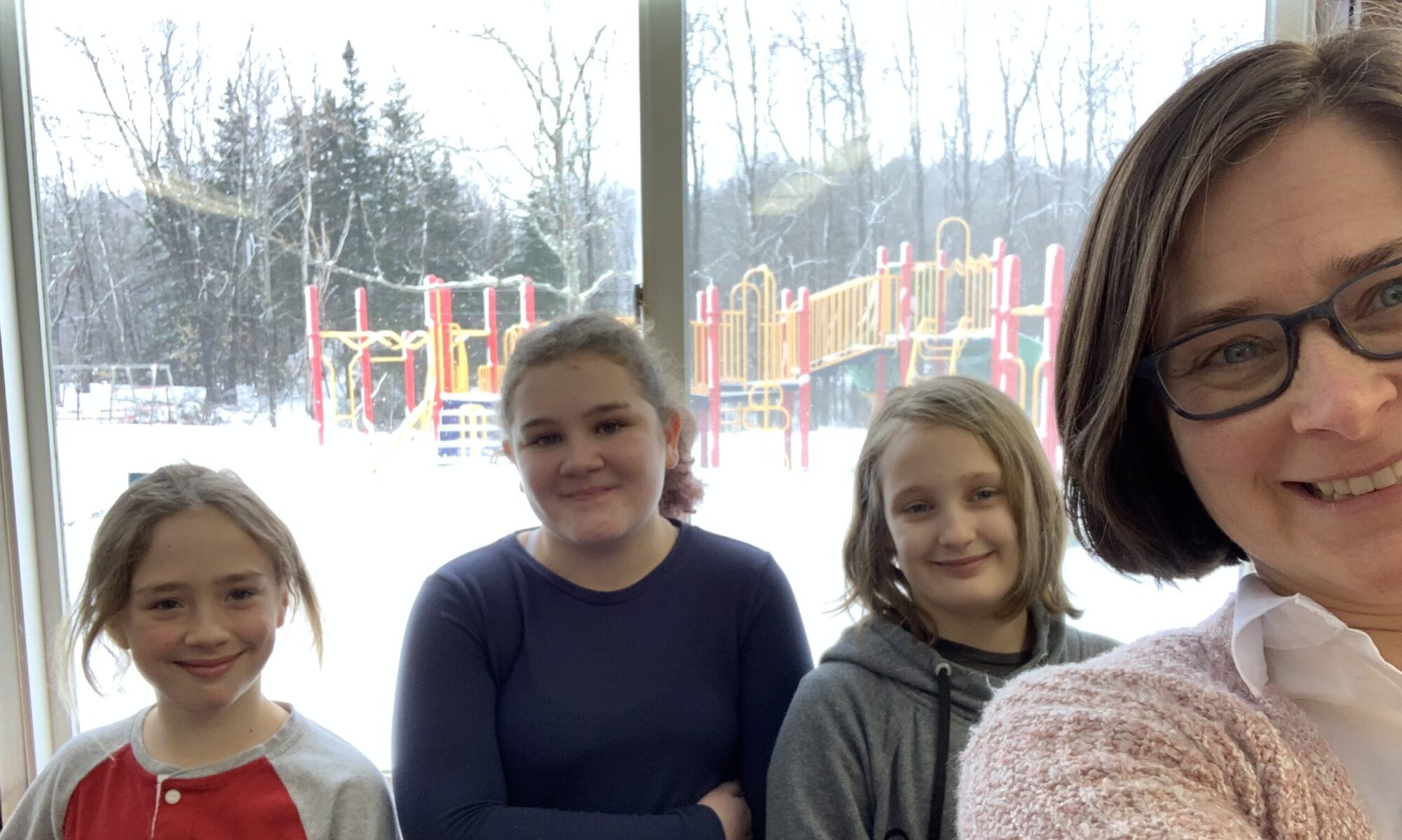The recent issue of the research journal Middle Grades Review was extraordinary for two reasons. First, it focused on the intersection of personalized learning and social justice education. And second, Vermont educators authored all but one of the articles.
I encourage folks to peruse the entire issue, but this may not be realistic in the busy lives of this blog’s readers. So I’m providing highlights from each article and a few overall takeaways in case it is helpful. If the timing isn’t good right now for going deeper (or even reading this post), perhaps bookmark it for the future. It is a hectic time, to be sure.
But go forth with one juicy and inspirational takeaway in mind: there are a lot of great things happening in middle schools, in Vermont and beyond.
Why Vermont?
The Middle Grades Review is edited by James Nagle, from St. Michael’s College, and Penny Bishop, who was at the University of Vermont until this year. In their introductory editorial, they note that Vermont is uniquely situated to study the interplay between personalized learning and social justice education.
Vermont has a robust policy framework to support personalized learning (especially Act 77). The three pillars of personalized learning work in tandem: personalized learning plans, flexible pathways, and proficiency based learning. Ideally, we aren’t talking about personalized as “individualized,” – we are emphasizing the “personal.”
Vermont’s investments in the middle school movement create an environment where the personal interests of students and the socially meaningful impact of curriculum are naturally intertwined. Vermont’s educators and students have long taken a personal interest in social justice education.
The editors conclude:
collectively, the articles in this issue on personalized learning for social change describe how personalized learning can be autonomous, collaborative, and authentic, while enabling young adolescents to address today’s social, economic, and environmental issues.
Sneak peeks
The full issue, published in 2021, is titled Personalized Learning for Social Justice: From Theory to Practice. Here’s a quick rundown of the articles authored by Vermonters.
How does personalized learning support democratic education? (Or not?)
Channeling John Dewey: What would Vermont’s philosopher of democracy have to say about personalized learning? by Kathleen Kesson – This essay is heavy on theory and philosophizing as a foundation for the other articles. And it is practical in the sense that it is applying Dewey’s classical ideas about democracy and intrinsic motivation to the modern personalized learning movement. Dr. Kesson points to the promise of personalization and interrogates its potential pitfalls.
Social justice themes and choice as basis for student agency
Using a social justice lens to connect the past with the present in a personalized learning environment by Kyle Chadburn and Andrea Gratton at Orleans Elementary School – Kyle and Andrea describe their approach to teaching Humanities based on broad themes. For example, they used the theme “Race in America” and look at the historical aspects (slavery, Black Code laws, the unfulfilled promise of Reconstruation) alongside present day impacts. The article also details the way that they provide students with choice and scaffolding for self-directed learning.
News flash: young adolescents have lots of questions about injustice
Student agency through negotiated practice by Meg O’Donnell at Shelburne Community School – Meg walks through the negotiated curriculum process that her team uses, based on the work of James Beane. She explains how students work together to identify questions they care about, first individually and then collectively. Eventually the learning community selects a question that serves as a theme, inevitably social justice oriented, for organizing their learning. Meg focuses on how student voice factors into assessment and provides examples of structures for student self-assessment and reflection.
Principles of personalized pathways for sustainability education: Educate, act, connect, and communicate by Don Taylor at Main Street Middle School and Kevin Hunt at Williston Central School – Through their work with the United Nations Sustainable Development Goals, Don and Kevin have co-developed this robust approach. In the article they explain the principles of educate, act, connect, and communicate. Then they describe the components of a personalized learning system, which include a personalized learning framework, personalized learning plans, and flexible pathways. They provide case studies of flexible pathways from each of their schools in the form of powerful projects they’ve facilitated with students.
Using a Makerspace to learn ELA and pursue Social Justice
Integrating School Makerspaces into the English Language Arts Curriculum by Lou Lahana, the Makerspace Coordinator at the Island School in New York City – Lou details his collaboration with a middle school ELA teacher in his school to utilize the existing social action-themed makerspace as a learning site. The article provides background on the potential for Makerspaces in terms of personalized learning and social justice education. And then it walks through the process of this case by showing us what happened during class meetings along with the focus of collaborative sessions between the teachers. Lahuna shares student work from throughout the process, along with links to some amazing finished products.
More please!
As I’ve read and returned to the amazing things going on in these educators’ heads and classrooms, I am so happy for their students and communities. And I want these types of experiences to be available to every single student.
Looking across this collection of Vermont perspectives, I noticed a few patterns that support their work.
Thematic curriculum
None of these educators are following topic-driven pacing guides. They aren’t locked into chronological accounts of history. They have the autonomy as professionals to organize curriculum in standards-aligned ways that make sense for them and their students. Chadburn & Gratton (2021) explicitly referenced the “luxury” (p. 2) of their district’s thematic curriculum. This should be standard practice, especially in a proficiency-based system. Lahana provided details on the adaptation of ELA curriculum to address social justice themes and incorporate more multimodal representation. This was only possible due to flexible requirements.
Relationships first
All of these educators invest heavily in relationships with and between students. Each of these schools, for example, have robust advisory programs that center community building. Trust is especially important when delving into complex and troubling social justice issues. It is also important when employing personalized learning approaches that are so different from the way school often operates. Administrators recognize that the teacher role itself may need to be reconceived. As O’Donnell (2021) says about negotiated curriculum and student led conferences, “This process is one that requires teachers to wear many different hats – part parent, part counselor (for children and sometimes parents), cheerleader, and boundary holder, resource creator, humorist, and education consultant” (p. 8).
Identity at the center
Each of these classrooms recognizes that student identity needs to be explicitly explored and continuously affirmed. Taylor & Hunt (2021) employ a robust Personalized Learning Framework where students examine themselves, their community, and set goals for both. They conclude,
When teachers know students and their families deeply, when they understand the principles, values, and concerns that the community is bringing to the classroom, and when they are able to build student achievement through those foundations, the stage is set to address significant issues of social justice that will come to bear on our students’ lives throughout the 21st century.
Once students and teachers deepen understanding of identity, they can shape the learning environment to uplift student identities. For example, Lahuna (2021) stressed, “Within The Tech Café there is a conscious effort to think of our work with students as ‘amplifying’ their voice rather than ‘empowering’ or ‘giving’ them a voice” (p. 5).
Responsive Assessment
Almost all of these positive examples are happening in proficiency-based learning contexts. Both Chadburn & Gratton (2021) and Taylor & Hunt (2021) reference “project based assessment.” Lahuna (2021) had students “co-create learning trajectories” (p. 4) that integrated their interests with the ELA content requirements of their class. We see portfolios / personalized learning plans used to drive assessment, reflection, and sharing with families (via student led conferences). In addition to portfolios and conferences, O’Donnell (2021) details other practices that center student voice, including self-assessment, student feedback on learning partners, and students writing weekly reflective emails home.
Community connections and impact
Social justice education doesn’t end at the classroom door. Each of these educators support students in applying their learning by making the world a better place. To make learning personal, and make social justice real, we can connect students with the people and organizations working locally to build better systems. Kesson (2021) highlights this when she concludes, “But perhaps most important, this approach to teaching and learning could maximize the utilization of the intellectual capital and practical wisdom of our communities, bringing forth as teachers folks who are on the cutting edges of social transformation, whether they be artists, solar engineers, musicians, legislators, computer software designers, or holistic healers. … I get excited about diversified, decentralized, localized ecosystems of personalized educational opportunities.”
Take social justice personally
I’m convinced that personalized learning and social justice education go hand in hand. To me, the connection is that we are centering humanity – our social systems and institutions should affirm and connect with every person. This is nowhere more true than in middle schools, full of young adolescents who are actively figuring out who they are and how the world works.
If you are a teacher, I hope you can learn from this research and/or see validation of your own approach. I know many teachers aren’t in a place to deepen practice or try something new right now, and that’s okay. But at minimum, I hope that these glimpses are thought provoking for the future.
If you are an administrator or community member with the power to influence systems, first make it clear to your entire school community that you prioritize personalized learning and social justice education. And that you will back your teachers up if and when they receive pushback. Then, please make it your personal mission to enable and cultivate these types of classroom practices. Put in place supportive structures such as thematic curricula, portfolios, student-led conferences, and proficiency-based assessment.
Teachers can do great things but they need the right conditions to thrive. They (and their students) deserve it.


